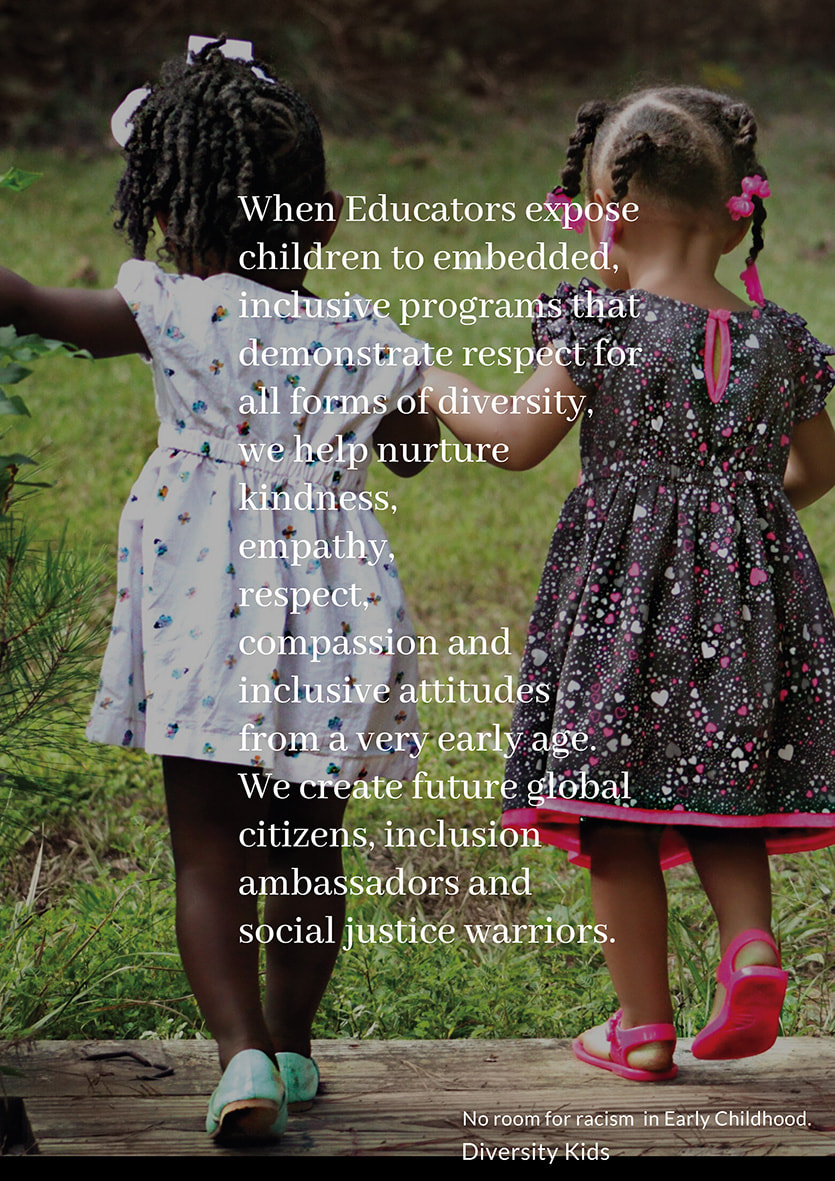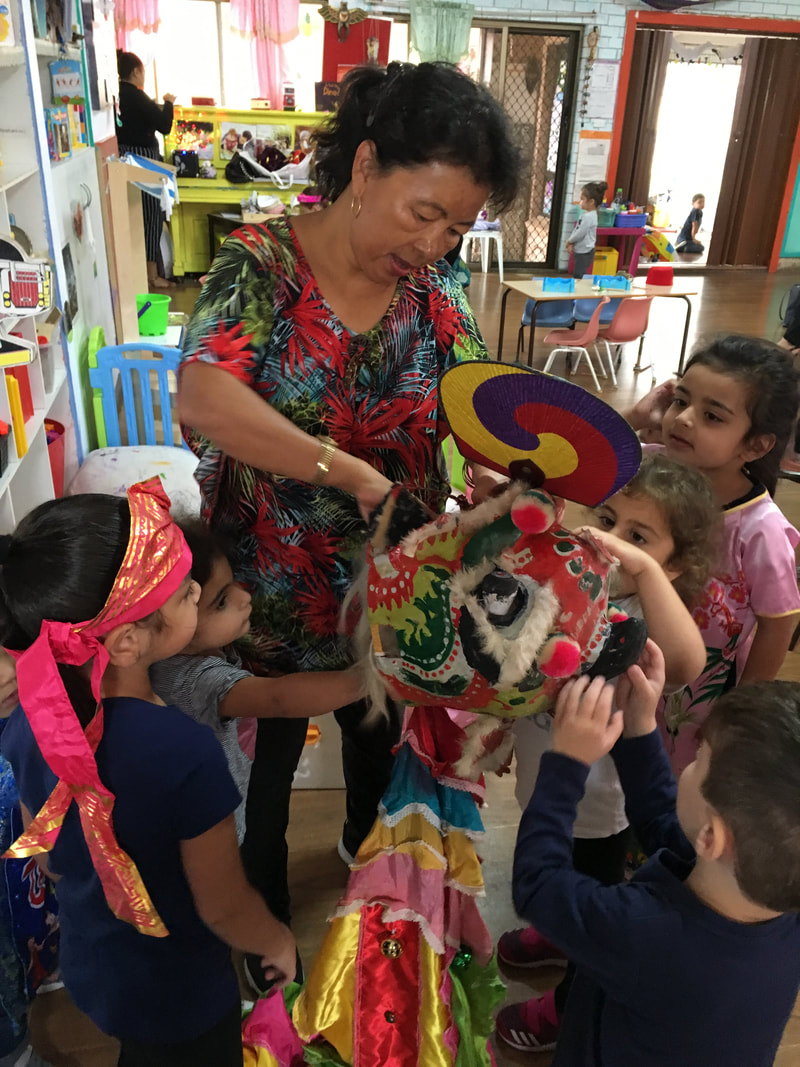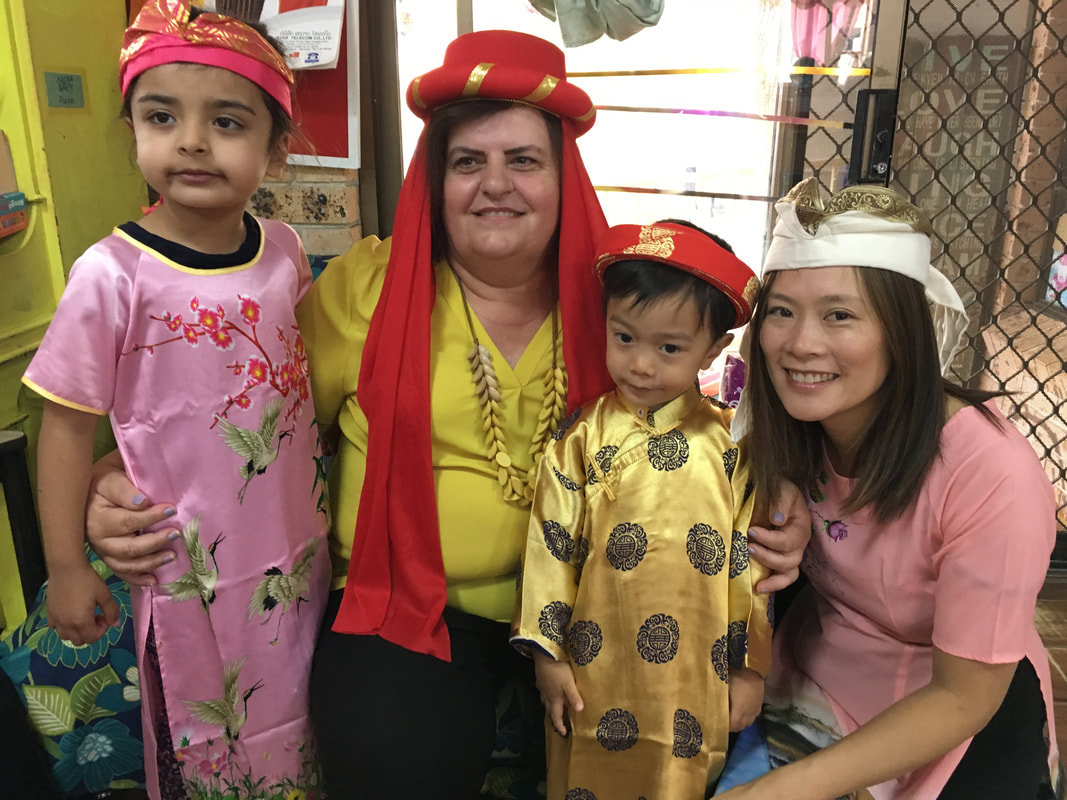of different groups in our community, in name calling, taunting or insults, or in actively and directly excluding or discriminating against people….”
(Dr Helen Szok, Race Discrimination Commissioner, Australian Human Rights Commission, 2012). Research shows that children are not born racist or prejudiced, but may start demonstrating prejudice in their attitudes and behaviour as young as three years of age, as they start to navigate their social world and start noticing difference. Although they may start exhibiting some form of prejudice or racial bias as early as 3 years of age, it is debatable whether the bias is evolutionary, learnt behaviour from others (including adults, siblings, peers, media, books, resources), or a blend of both. But this concept is a topic in itself. At this age, it is believed that prejudice is primarily based on stereotypes, limited experiences and modelling. What we are certain of though, is that the behaviour of adults impacts largely on children. Adults need to be very careful about passing on their own biases and prejudices before children even understand the concept of racism. This is why it is so important that we model respectful and inclusive behaviour, particularly during these times, where children may be exposed to racism in our community. By starting early, we can help children stand up to and reduce prejudice and discrimination, even in the long-term. Climates such as the current one, will provide many opportunities for discrimination & prejudice to surface in children. As Educators we can seize these opportunities as they arise, and use them to openly discuss, clarify, introduce & embed programs that promote and embrace culture, diversity, anti bias, kindness, respect, empathy, belonging, inclusion, community and social justice. Doing this enables us to:
Stages of Awareness Of Difference: (adapted from Roots & Wings, York S, 1992) 3-4 year olds:
5-6 year olds:
What can we do as Educators? As Educators, we can also engage in critical reflection and thoughtful conversations with staff to build a team approach to countering racism and bias. Some critical questions that we can reflect on as individuals and as a team include:
Below are some examples of what we are hearing children say, and behaviours currently exhibited during the COVID – 19 pandemic:
In these instances, it is evident that children are acting out and projecting learned behaviour. They have seen, heard or learnt some things from various sources including adults, siblings, peers or what they are exposed to in the media. This is why it is paramount for us as adults to be mindful of what children are exposed to, and the language that we use around race. We are in a position to be good, positive role models and to keep an eye on what information our children are exposed to and the conversations they are hearing and having around the pandemic. Responding to and dealing with racist, prejudiced or discriminatory behaviour, talking about difference and diversity is quite often a sensitive, confronting subject for adults to deal with. However, it’s important to deal with these issues when they arise, especially in these instances where the discriminatory behaviour is a by product of something learnt, and has consequences for the children that are being targetted. We have an obligation to teach all children in our settings that any form of discrimination is not acceptable and unkind. We must instill a respect for diversity and as Teachers/Educators we are in the best position to plant seeds of harmony from a very early age. When children are exposed to embedded inclusive programs that facilitate and demonstrate respect for all forms of diversity, we help nurture kindness, empathy, compassion and inclusive practices from a very early age. We are helping create future global citizens. We can do our bit to eradicate prejudice in young children by helping create environments and delivering programs that are inclusive of all and help foster a sense of belonging and safety for all children. But we cannot do this alone – there needs to be an extension of this between the home environment and care & education settings. So part of our strategy may also need to focus on getting the families involved and getting this important message out there. Sometimes conversations need to be had with families about children’s behaviour and potentially working in partnership to deal with issues that arise. This might take the form of an article in a Newsletter, Information Sessions or Workshops for families or translated information. What should we do if we hear children making discriminatory comments or exhibiting racist behaviours?
The early years are a critical time, where children are forming their identity and learning about others and the world around them. This is our opportunity to role model cultural inclusive practices and ensure that diversity is embraced and celebrated. Let’s use the pandemic, to work with our young to combat racism and embrace diversity from the early childhood years. As Teachers, Educators & Carers we are in a critical position to take steps, implement strategies and programs that ensure that no child is discriminated against, experiences prejudice in their learning environment and that all children live and learn harmoniously during this worldwide challenging time and beyond.. There is no room for racism, especially in our early childhood settings. Resources: Look out for our associated resources released over the next few weeks. with more practical ideas. The Australian Human Rights Commission 2016 has developed a toolkit for early childhood educators on cultural diversity and responding to prejudice. The toolkit provides resources, examples of responses to difficult questions and concerns and links to educational frameworks & standards. https://www.humanrights.gov.au/our-work/education/building-belonging-toolkit-early-childhood-educators-cultural-diversity-and Suggested Books: Hello – Tony Flowers (2016) I’m Australian Too – Mem Fox (2017) The Barefoot Book of Children – Tessa Strickland, Kate de Palma, David Dean (2018) We Are All Welcome – Alexandra Penfold, Suzanne Kaufman (2018) Happy In Our Skin – Fran Manushkin, Lauren Tobia (2015) Shades of People –Shelley Rotner, Sheila M Ketty (2009) All Kinds of People – Shelley Rotner, Sheila M Ketty (2018) References Derman-Sparks, L (1992) . "The Anti Bias Curriculum. Tools for empowering young children." Washington DC: National Association for the Education of Young Children. Lady Gowrie Child Care Centre, Sydney (1997) "Playing Fair." York, S (1992), “Roots & Wings”, Redleaf Press, USA
0 Comments
We hear many stories of cultural differences around child rearing practices that conflict between home environment and child care setting expectations. Some examples include feeding, toileting, sleeping arrangements, attitudes to play, school readiness and disability.
In these instances, communication and information is the key. When we build strong, positive partnerships with families, hold cultural conversations, provide translated literature, or invite professional guest speakers to speak on these topics, attitudes usually change and mindsets shift. Work through cultural challenges with open, flexible minds, collaborating or compromising with families and coming up with solutions that work for all parties. Create a sense of welcome, acceptance and belonging, where every child and family is visible and valued. Enable experiences that are meaningful, authentic and extensions of home environment. Establishing connections with your Culturally & Linguistically Diverse children & families17/7/2019 What would it feel like as an adult migrating to a new country and having to start a new job immediately?
Just imagine. You do not speak the language. You are not familiar with the new culture and practices. You are feeling overwhelmed, disconnected and anxious in this new country and work environment. If we would struggle as adults, just imagine how a newly arrived child or a child with little or no English and no experience in the education & care setting would feel. This is why inclusion is paramount and inclusive practices matter. It is important that we, as early childhood professionals and teachers establish strong cultural connections with our CALD children and families. Doing so allows us to better tailor our programs, our support and inclusive practices around the unique needs of all our children. There are many ways that we can ensure that our services are culturally inclusive and that we connect well with our CALD children & families, creating a sense of welcome and belonging for everyone. Below are some practical tips & strategies to add to your Cultural Inclusive Toolkit:
All these strategies ensure that the voices of all the children at your service are heard, particularly those whose first language is not English. They also help create a sense of ‘Belonging’ for your CALD children by providing and maintaining a safe, nurturing, familiar, predictable and culturally/linguistically relevant care environment, where they feel comfortable and safe in their experiences and identity. DIVERSITY KIDS can provide support in all key areas suggested above! As we highlight in our well known quotes: “Before a child is able to Be, to Belong & to Become, they need to be included.” "There is Belonging, Being & Becoming. But Inclusion comes first." |
AuthorMeni Tsambouniaris Archives
March 2024
Categories |
|
|
©Diversity Kids 2023. Designed by BlackRhino Creative.
|




 RSS Feed
RSS Feed